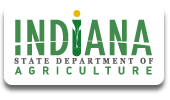Welcome to Indiana's DAP
Indiana’s Great Lakes Water Quality Agreement (GLWQA) Domestic Action Plan (DAP) to reduce phosphorous to the Western Lake Erie Basin (WLEB) is the product of a dedicated Advisory Committee comprised of representatives from different stakeholder sectors and led by the Indiana Department of Environmental Management (IDEM). Founded on the principle of adaptive management, this DAP is a dynamic document acknowledging that phosphorous loading in particular, and nutrient pollution in general, is a very complex problem caused by point and nonpoint sources across all sectors, which requires a multi-dimensional solution.
